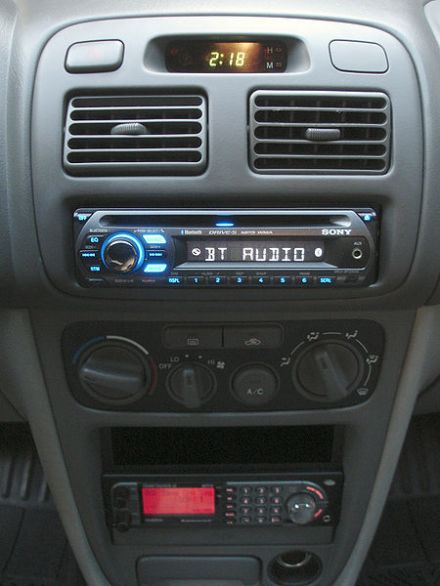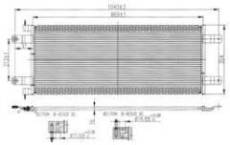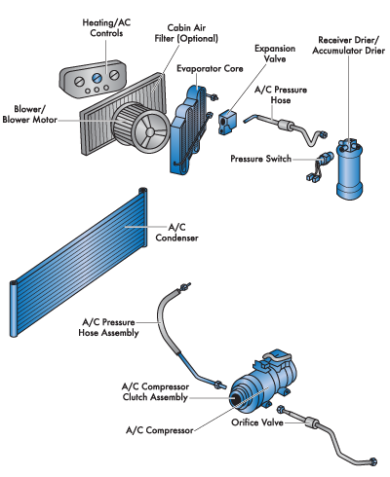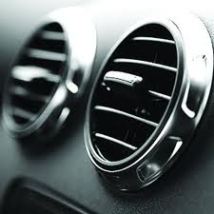Have you ever driven your car on a hot summer day and wondered why the air conditioner suddenly decided to stop working? The most common cause for a malfunctioning air conditioner unit is a low level of refrigerant. This could be caused by a leak somewhere in the system. Since modern air conditioning units are complicated creatures, it’s best to have a professional check it out.
A lot has changed sinced 1994, when the Federal government outlawed the use of a refrigerant called
R-12 or as we know it, Freon. In the past, if our vehicle wasn’t blowing cool air, we’d drive to a nearby service shop and they would refill the Freon and we’d be on our merry way. Today, it’s a little more complicated than that. Freon has been entering the atmosphere every year, therefore destroying the ozone layer. Lots of people needed Freon refills because they had a leak in their system, therefore millions of pounds of Freon were entering the atmosphere every year.
If your car was built before 1994, then you will need a licensed professional to check out the system to see if you have a leak and take care of any repair work and that can dispose of any needed Freon properly . In some states, it is illegal to refill a leaky system with R-12. Even older cars can be retrofitted to use the newer, safer type of refrigerant called R-134a.
To help better understand the air conditioning unit in your vehicle, let’s help you become familiar with the system. The automobile AC unit is basically a refrigerator in a weird layout. It’s designed to move heat from one section (inside your vehicle) to some other place (the outdoors). We hope this article will give you some basic understanding so you can pinpoint where the problem is coming from so you can explain to your service shop and have a better understanding as to what needs to be repaired when they have a diagnosis for you.
Now, get familiar with the parts to your a/c unit:
- The compressor: compresses and circulates refrigerant in the system
- The refrigerant: (on modern cars, usually a substance called R-134a, older cars have r-12 freon which is becoming increasingly more expensive and hard to find, and also requires a license to handle) which carries the heat
- The condenser: Changes the phase of the refrigerant from gas to liquid and expels heat removed from the car
- The expansion valve: Somewhat of a nozzle and functions to simultaneously drop the pressure of the refrigerant liquid, meter its flow and atomize it
- The evaporator: Transfers heat to the refrigerant from the air blown across it, cooling your car
- The receiver/dryer: Functions as a filter for the refrigerant/oil, removing moisture and other contaminants
 The compressor puts the refrigerant under pressure and sends it to the condensing coils. In most cars, these coils are in front of the radiator. Compressing a gas is very hot, which makes the extra heat picked up in the evaporator expelled to the air flowing across it from outside the car. When the refrigerant is cooled to its saturation temperature, it will change phase from a gas back into a liquid (this gives off a bundle of heat known as the “latent heat of vaporization”). The liquid then passes through the expansion valve to the evaporator, the coils inside of your car, where it loses pressure that was added to it in the compressor. This causes some of the liquid to change to a low-pressure gas as it cools the remaining liquid. This two-phase mixture enters the evaporator, and the liquid portion of the refrigerant absorbs the heat from the air across the coil and evaporates. Your car’s blower circulates air across the cold evaporator and into the interior. The refrigerant goes back through the cycle again and again.
The compressor puts the refrigerant under pressure and sends it to the condensing coils. In most cars, these coils are in front of the radiator. Compressing a gas is very hot, which makes the extra heat picked up in the evaporator expelled to the air flowing across it from outside the car. When the refrigerant is cooled to its saturation temperature, it will change phase from a gas back into a liquid (this gives off a bundle of heat known as the “latent heat of vaporization”). The liquid then passes through the expansion valve to the evaporator, the coils inside of your car, where it loses pressure that was added to it in the compressor. This causes some of the liquid to change to a low-pressure gas as it cools the remaining liquid. This two-phase mixture enters the evaporator, and the liquid portion of the refrigerant absorbs the heat from the air across the coil and evaporates. Your car’s blower circulates air across the cold evaporator and into the interior. The refrigerant goes back through the cycle again and again.
Leaks are easy to spot, but not easy to fix without pulling things apart. And if there is a bad enough leak, the system will have no pressure in it at all. Find the low-side valve and with a gauge, check the PSI level. DO NOT use anything else to poke in the valve, as this is ILLEGAL. It is called venting.
Start the car, turn on the AC and look under the hood. The AC compressor is generally a pump-like thing off to one side with large rubber and steel hoses going to it. Often, it has one or two things that look like valve stems from a bike tire on it. The pulley on the front of the compressor exists as an outer pulley and an inner hub which turns when an electric clutch is engaged. If the AC is on and the blower is on, but the pulley is not turning, then the compressor’s clutch is not engaging. A few examples of causes for this would be: a bad fuse, a wiring problem, broken AC switch in the dash, system could be low on refrigerant, or a possibility of other issues.
If the system cools, but not very much, it could be low pressure and you can top off with refrigerant. Most auto-supply stores will have a kit you can buy to refill a system , complete with instructions. Be sure not to overfill! Adding more than recommended will actually decrease performance and not increase performance.
Again, this article is just a brief overview to help you understand the components of the a/c unit in your automobile and possibilities of why it may not work properly. If you have any questions, please make an appointment or stop in at your auto repair shop. I hope this helps you feel more comfortable speaking with your shop about any work that you may need done to your system. You can always give us a call as well to answer any questions you may have.
Moore’s Automotive
1246 Hartford Turnpike
Vernon, CT 06066
Ph: (860) 872-2024
www.mooresautomotive.com

